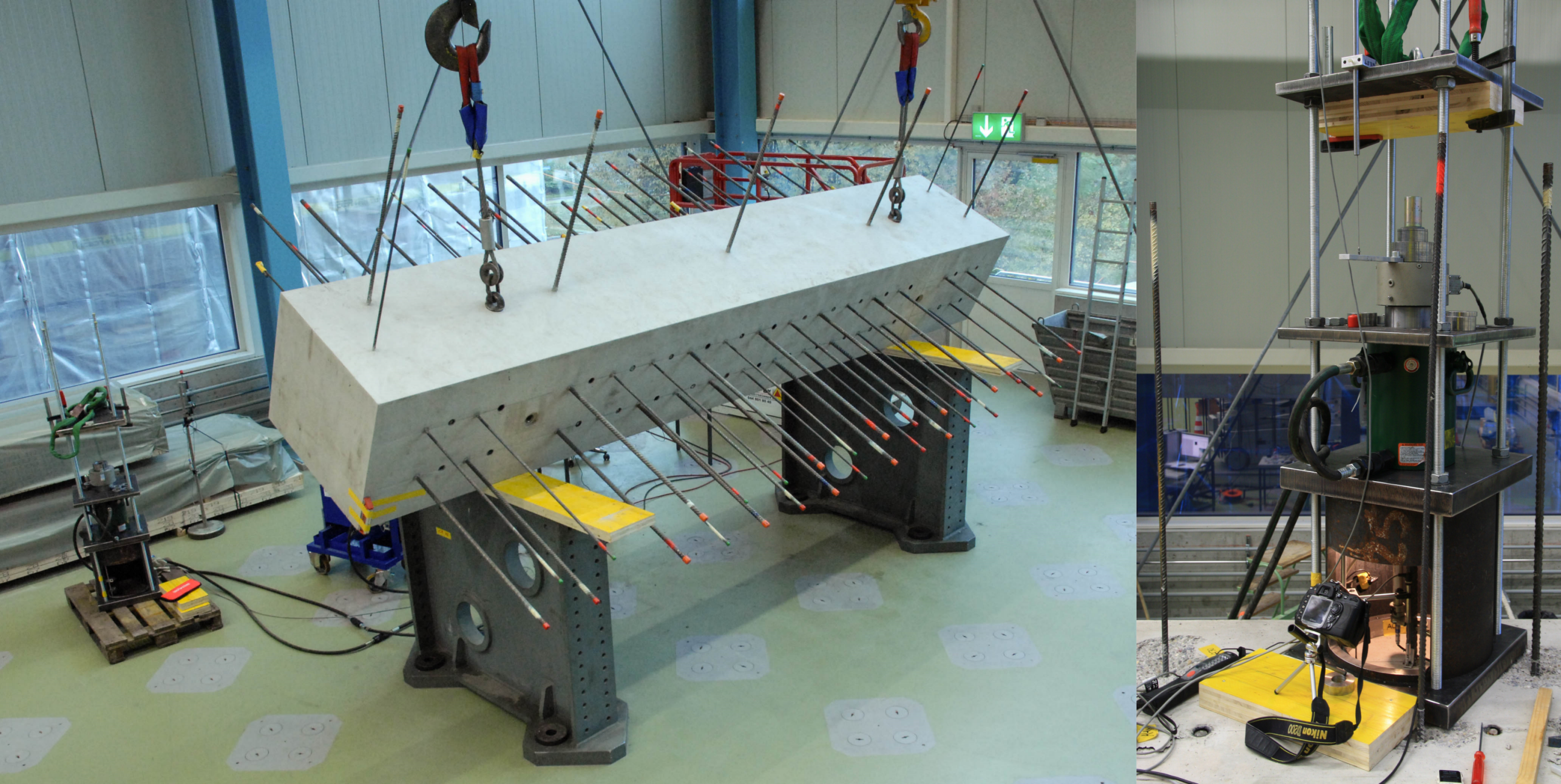Bond behaviour of reinforced concrete
The characterization of bond between steel rebars and surrounding concrete is fundamental for the understanding of the cracking in concrete structures, the assessment of their deformation capacity and the estimation of the actual deformations. Among others, bond behaviour is influenced by the characteristics of the concrete (strength, consistency), the rebars (bar diameter, form of the ribs, texture), and the geometrical constraints (position of rebar during casting, concrete cover).
Today, there exist several micro and macro models describing the characteristics of bond. They are based on different mechanically or empirically justified assumptions and consider various influencing factors. Still, there is currently no comprehensive fully mechanically based theory for the description of bond.
By means of experiments with long and short embedded rebars with different diameters and steel characteristics bond behavior is analyzed. Fibre optic cables allow to measure the strain of the rebar over its whole length and to back-calculate the normal and bond stresses at every point of the one dimensional system. The influence of possible bond deterioration caused by yielding or internal cracks at the loaded end can be taken into account and investigated. The project aims at deriving a bond slip model, whose parameters are determined on a mechanical basis.

